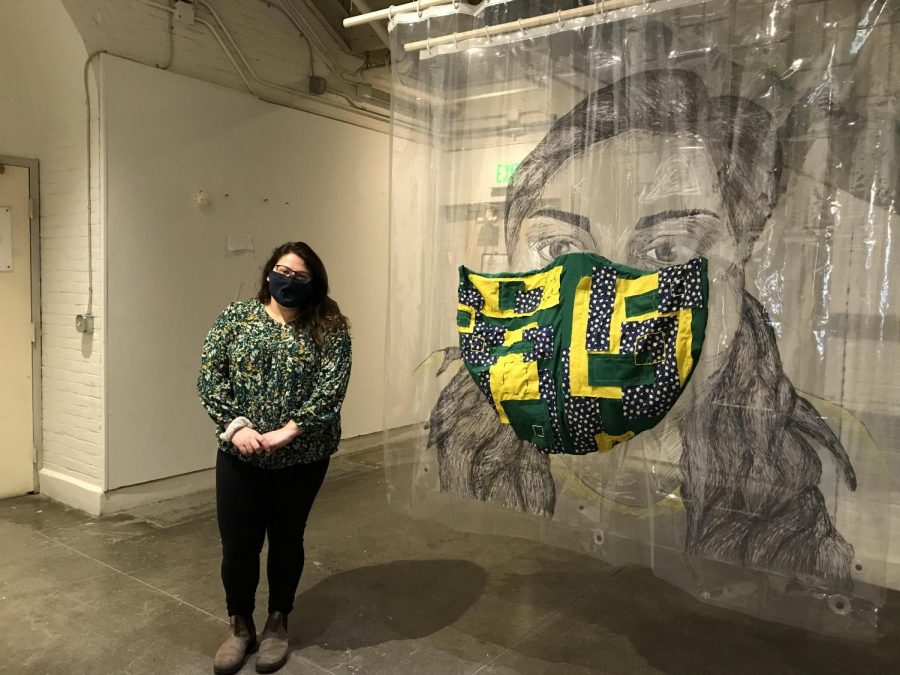Art student renders pandemic life in new sculpture
Daisy Hutter poses with her sculpture ‘2020 Self Portrait” at Williams Hall Nov. 3.
November 13, 2020
In the lobby of Williams Hall, a three-dimensional sculpture suspends from the ceiling. It is a portrait of a young woman wearing a mask. Her deep eyes and flowing hair are sketched in black and white, making the patch-worked mask of greens, yellows, and blues stand out.
Daisy Hutter, a junior art education major, created the installation for her advanced sculpture class.
The sculpture is titled ”2020 Self Portrait.”
Hutter created this self-portrait sculpture as a response to one of the art prompts in her class. The class was assigned to respond to one of three COVID-19 related concepts during the semester, “Distance,” “Remote” and “Mask” in a sculpture.
Her inspiration for her mask piece was ignited by observing the consequences of the pandemic in her everyday life.
“It’s more than just masking our face, it’s masking who we are,” said Hutter. “Thinking like an artist is looking at the world around you and figuring out how to conceptualize the ideas for other people to understand,” said Hutter.
First Hutter assembled a small cardboard model of the sculpture in order to help give shape to her ideas, she said.
“I definitely think in models, it’s not economical or sustainable to go right into the major thing without thinking about it. Models help me figure out what I want to do,” she said.
To construct the larger sculpture, Hutter first drew a portrait of herself on a plastic shower curtain with sharpie and posca pens. Then, she sewed a colorful mask and attached it to another plastic shower curtain which she placed in front of the first curtain.
She even cut and sanded the two wooden poles that hang from the beam by wires that hold the shower curtains. The majority of materials were purchased out of her own pocket.
Depending on the angle the viewer observes the piece from, they can see her high cheekbones, textured lips, and defined chin that are hidden behind the vibrant mask.
Hutter said that you need to see someone’s whole face to fully know them because masks cover the bottom half of our visible emotions.
“I wanted to show the socially responsible side of me, and then show me, the bottom half of my face,” said Hutter. “There are people in my class who I don’t know how the lower half of their face looks like. It’s crazy, I’m making connections with these people but I don’t know what they look like.”
Hutter said that as a future art educator, she is excited to teach children how to channel their emotions and ideas of the world into art work through varying mediums.
“Art is taking what’s inside of you and releasing it,” Hutter said. “Art is so therapeutic and important, it’s what we need right now in this pandemic. We need art.”








Hannah Hutter Berenson • Nov 17, 2020 at 7:50 pm
This is an amazing piece of art and a very sophisticated young artist who has captured the mask and the meaning perfectly.
Hannah Hutter Berenson